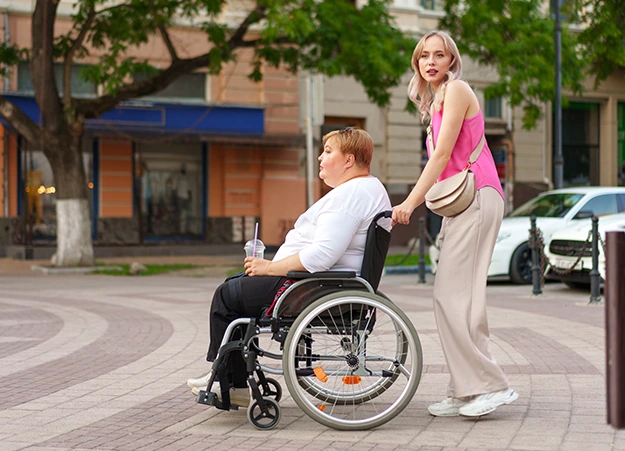What SIL Means for Independent Living
Have you ever thought about what it really means to live on your own? Independence means more to many disabled people than just being able to do things on their own. It means having choices, respect, and power over daily life. The goal of supported independent living (SIL) is to find the best balance between help and independence by giving support that is specific to each person’s needs. SIL makes sure that people can stay in their own homes, do daily tasks, and work towards their own personal goals. They can also get help from trained staff for advice, personal care, and skill development. SIL helps people build confidence, learn important life skills, and be fully involved in their communities by giving them organised support in a flexible setting.
Supported Independent Living (SIL)
The National Disability Insurance Scheme (NDIS) pays for a flexible type of help called Supported Independent Living (SIL). Its goal is to help people with daily tasks like cooking, cleaning, laundry, personal care, and managing home routines while also encouraging them to be independent and make their own choices. Participants in SIL can live alone or in shared homes with other participants, based on their personal preferences and support needs. Support workers are trained to give advice and help without taking away power. This helps people build life skills, confidence, and the ability to rely on themselves. People can live full lives while getting the help they need when they need it with this balance of support and independence.
Who Can Benefit from SIL?
People who need daily help because of a disability but still want to keep as much freedom as possible can use Supported Independent Living (SIL). It’s good for people who want to make their own decisions and keep track of their own schedules but need help with personal care, housework, or learning new skills. SIL is good for people who live in shared homes, move out of family homes, or are getting ready to live on their own because it offers organised support while building confidence, independence, and the ability to make decisions. SIL makes sure that participants can grow in a safe and empowering space by tailoring support to each person’s needs.
How SIL Works in Daily Life
The goal of Supported Independent Living (SIL) is to help people become more independent while still letting them take part in daily activities.
- Collaborative Support: Support workers help people instead of taking over, giving them advice and assistance when they need it.
- Daily Routines: Staff may help with things like personal care, meal preparation, and daily routines while also encouraging people to take part.
- Transport Help: SIL can include help going to work, appointments, or community events, making sure that people are safe and dependable.
- Encouraging Independence: People who take part are given the freedom to choose how they live and practice daily skills, which helps them gain confidence and become more independent over time.
The Role of SIL in Building Independence
The main goal of Supported Independent Living (SIL) is to give people more power. SIL providers in Melbourne give participants structured help that lets them learn and practice important life skills like budgeting, cooking, cleaning, making appointments, and keeping the house in order. Participants can gain confidence, make better choices, and depend less on others by taking on these responsibilities gradually with the help of trained support workers. This method helps people become more self-sufficient and independent over time, making them feel strong and in charge of their daily lives while still knowing they can get help when they need it.
SIL vs. Other Types of Support
In terms of consistency, structure, and focus on long-term independence, Supported Independent Living (SIL) is different from other types of disability care. Drop-in support and short-term care only help for a short time. SIL, on the other hand, provides ongoing support in the home, so people can build routines, life skills, and confidence over time. It’s also not the same as day programmes and community access supports, which focus on activities outside the home, or respite care, which is meant to give people a break for a short time. SIL offers personalised in-home support as well as chances to improve one’s skills, making it a complete choice for people who want to live on their own while still getting the help they need.
Benefits of SIL Beyond Daily Help
Supported Independent Living (SIL) does more than just help with daily tasks; it also improves health, social life, and community involvement.
Improved Mental Health
Having constant support lowers stress and anxiety, which is good for your mental health.
Stronger Social Connections
People who live in supported environments are more likely to associate with staff and other residents, which helps them make connections that matter.
Greater Community Involvement
When people’s practical needs are met, they can be more involved in community events, work, or school.
Stable Support System
SIL provides a safe and stable home setting that helps people grow and become independent.
How SIL Homes are Designed
SIL homes are carefully planned to offer a good balance of privacy, independence, and living in a community. Most of the time, each resident has their own bedroom, but they divide shared areas like bathrooms, kitchens, and living rooms. Many of these homes have been made more accessible by adding ramps, grab bars, and changing the bathrooms or kitchens to make them safer and easier to get around in. Support workers who have been trained to respect each resident’s personal space and choices are ready to help, guide, and watch over them. The way SIL homes are set up makes sure that residents can learn useful life skills, interact with their housemates, and live pleasantly, all in a secure and helpful setting.
Choosing the Right SIL Provider
It’s important to choose the right Supported Independent Living (SIL) provider so that participants get high-quality help that fits their needs and goals.
- Respectful Approach: Look for providers who treat participants with respect and dignity and who value their choices.
- Personalised Care: Instead of a standard, one-size-fits-all method, support plans should be made to fit the needs of each person.
- Focus on Long-Term Goals: The right service helps people gain skills and confidence that help them reach their long-term goals, not just get things done right now.
- Consistency & Reliability: A professional and reliable provider makes sure that help doesn’t stop, which gives participants and their families peace of mind.
Conclusion
Supported Independent Living isn’t just a service; it’s a way to become independent. People can learn important life skills, boost their confidence, and have a better quality of life knowing they can always get help. SIL is more than just help for many people and families; it’s a chance to live with freedom, respect, and hope for the future.
Keep an eye for more latest news & updates on The Instyles!





